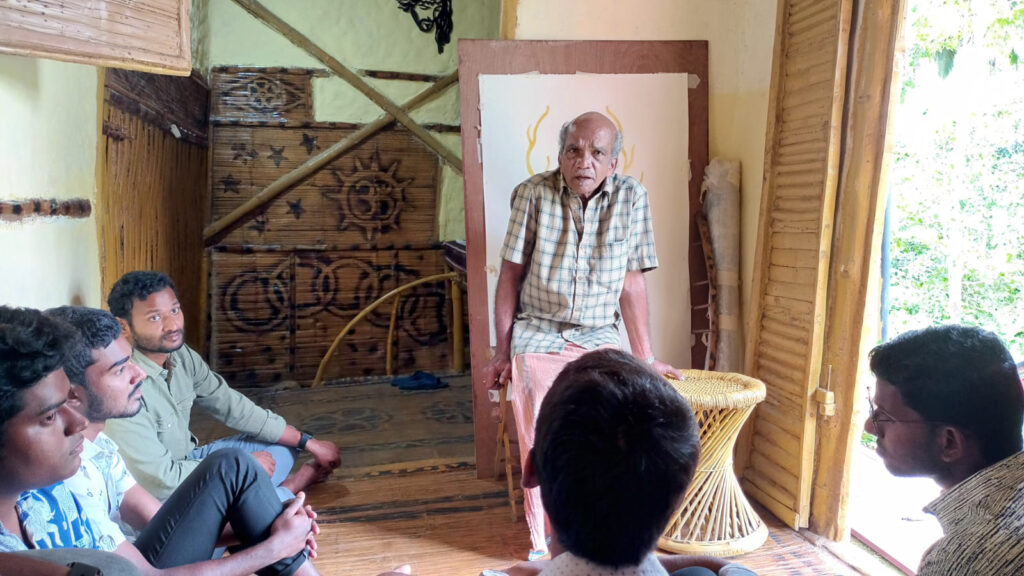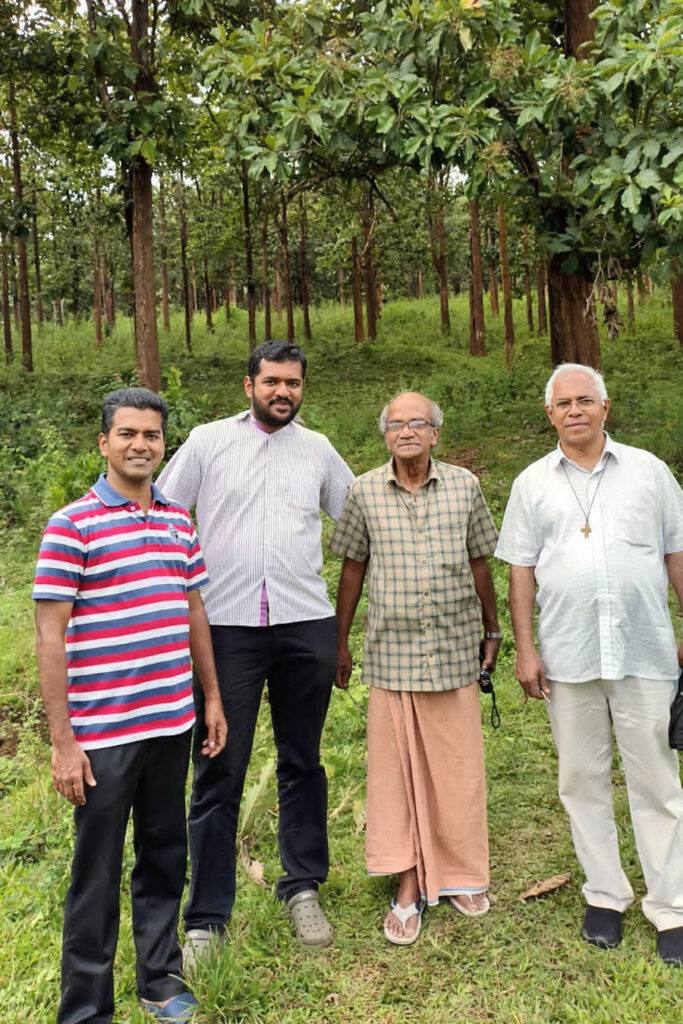Tribal communities in India, including those in the state of Kerala, are integral to the country’s cultural and social fabric. Kerala, although known for its high literacy rates and modernization, still harbours several tribal groups who inhabit the forests and hilly regions of the state. Traditionally, Kerala’s tribal communities have relied on subsistence agriculture, hunting, and gathering for their livelihoods. However, factors like deforestation, land encroachment, and lack of access to education and healthcare have posed significant challenges to their way of life. As a result, many tribal communities in Kerala face socio-economic marginalization and struggle to access basic amenities.
In response to these problems, some of our Redemptorists, Fr. James Chakkalakal C.Ss.R., and Fr. Freddy Menezes C.Ss.R. have stepped in to support tribal communities in Kerala. Fr. James is staying with them for the past forty years supporting their causes. We, the six novices (Denny Maleane, Sumit Mane, Sumanth Paschal, Aalai Pio, Maria Prasanth, Michael Pereira) and our Novice- Master Fr. George Mathew C.Ss.R. along with Mr. Francis, President of Association for Humanitarian Relief, Fr. Freddy Menezes C.Ss.R. the Secretary of the Association, and Mr. Dinesh, (Local Tribal Youth Leader) have been part of this one-day event. We embarked on a journey to engage with tribal communities in Muthanga, seeking to immerse ourselves in the rich tapestry of cultural exchange. We had interactions, music, dance and a shared a meal. We had an encounter with the diversity and warmth of tribal culture.
Our aim was simple yet profound: to foster understanding, build connections, and share moments of joy through music, dance, and the universal language of food. We visited their houses, asking about their lives and daily struggles, and enquiring about their needs. The harsh realities of limited access to resources, healthcare, and economic opportunities painted a stark picture of the challenges faced by the community. The visit highlighted the critical need for accessible healthcare services, particularly for the vulnerable among them such as the elderly and women. The lack of adequate medical facilities and trained healthcare professionals posed significant challenges, leaving many community members without essential healthcare services. A loss of hope and determination permeated the youth within the tribal community as they have no employment opportunities. Limited access to vocational training and job prospects exacerbated unemployment rates, leaving many young individuals disillusioned and uncertain about their future.
In this tribal community, earning a livelihood often revolves around the forest, which serves as a vital source of sustenance and income. Many community members engage in activities such as collecting honey, gathering medicinal herbs, and harvesting fruits from the trees scattered throughout the forest, but since the Government has cutdown the natural trees and made plantation, it is very difficult for them to meet their daily needs. Due to the lack of employment opportunities and resources from forest, they have only one meal a day. The day also shed light on the persistent threat of wildlife encounters faced by the tribal community, as they coexisted with the untamed wilderness surrounding their habitats. The ever-present risk of wild animal attacks posed a constant source of fear and uncertainty, compelling the community to adopt adaptive strategies and protective measures to mitigate the inherent dangers. As our guides were busy in interacting with elders of the family, we the novices wasted no time in engaging with tribal children. Even though none of us were familiar with the local language, we made a connection that transcends language barriers.
After finishing our visit in one colony we reached out to another tribal community. Upon reaching the tribal settlement, we were greeted by warm smiles and curious gazes. Gathered under the shade of ancient trees, we unfolded with a series of enriching interactions. Music proved to be a universal language that transcended cultural barriers. We the novices, armed with guitar and drum, shared our musical talents with the tribal people. In return, the tribal community introduced us to their traditional dances and songs, creating a beautiful fusion of sounds that echoed through the forest. The rhythmic beats, movements and expressive gestures told stories of cultural heritage and became a symbol of harmony and shared joy. As the day came to an end, we shared a communal meal with the tribals. As they were enjoying their meals, we entertained them with music and songs.
As the day drew to a close, we gathered our insights to reflect on our journey among the tribals. The issue of children’s education loomed large over the community. Limited access to educational resources and infrastructure posed significant barriers to learning, hindering the holistic development and future prospects of the younger generation. The need for concerted efforts to promote literacy and educational initiatives resonated deeply, underscoring the importance of empowering children with knowledge and opportunities for growth. The absence of adequate measures for wildlife conservation and habitat protection exacerbated their vulnerability, calling attention to the pressing need for sustainable solutions and support systems to mitigate risks and ensure community resilience.
In conclusion, our day spent with the tribal communities was not merely a journey of exploration but a soul-stirring odyssey of empathy, compassion, and mutual respect. It underscored the intrinsic value of cultural diversity and communal harmony, inspiring us to embrace our shared humanity and work towards a more inclusive and equitable world for generations to come.
Aalai Pio













